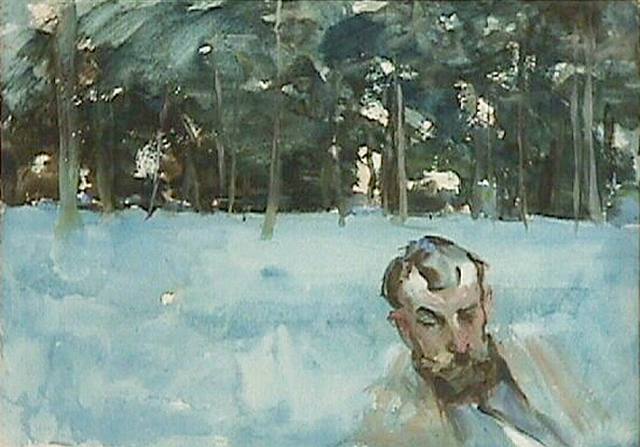Let’s ditch the stuffy art history textbook and dive into the world of Édouard Manet (1832–1883), the groundbreaking French painter who wasn’t just an Impressionist but a revolutionary figure who paved the way for modern art. Forget the tired old stories of scandal – we’re looking at Manet’s unique perspective, his masterful techniques, and how he challenged everything the art world thought it knew.
By exploring key works like Olympia and Le Déjeuner sur l’herbe, we can gain a deeper understanding of how his bold choices and innovative approaches reshaped the course of modern art. These works not only highlight his technical mastery but also reveal his intent to provoke, question societal norms, and reflect the rapidly changing world of 19th-century Paris.
Manet and the Rejection of Tradition: A Revolutionary Painter
Manet wasn’t your typical artist quietly painting landscapes. He was a rebel, pushing boundaries and challenging the established artistic norms of his time. The official art salons of Paris, like the Salon de Paris, regularly rejected his work. Why? Because his paintings, while seemingly realistic on the surface, actually broke with traditional academic painting techniques.
He didn’t meticulously blend his colors; instead, he embraced visible brushstrokes, a technique that would later become a hallmark of Impressionism. This bold approach not only distinguished his work but also influenced a generation of artists. By showcasing the artist’s hand in his compositions,
Manet emphasized the act of creation itself, challenging the expectation of art as a flawless imitation of reality. His contemporaries were inspired by his willingness to break rules, which gradually shifted public perception and paved the way for the Impressionist movement to gain acceptance.
Instead of the smooth, polished surfaces favored by academic artists, Manet’s canvases burst with raw energy. This visible brushwork, a distinct element of his style, wasn’t just a stylistic choice; it was a deliberate rejection of the artificial perfection demanded by the official art establishment. He captured the essence of a scene—the fleeting moment—rather than striving for flawless realism. This departure from established techniques is a crucial aspect of understanding Manet’s unique contribution to art history.
Manet’s Masterpieces: Olympia and Le Déjeuner sur l’herbe
Two paintings, above all, ignited controversy and cemented Manet’s place as a revolutionary figure: Olympia (1863) and Le Déjeuner sur l’herbe (The Luncheon on the Grass, 1863).

Le Déjeuner sur l’herbe, featuring a nude woman among clothed men in a seemingly casual outdoor setting, was shocking to contemporary viewers accustomed to idealized depictions of classical nudes in carefully constructed mythological scenes. Manet’s brazen depiction of a modern woman in a commonplace setting was perceived as deeply inappropriate. This was a deliberate challenge—a rejection of artistic conventions.
Olympia, with its frank depiction of a nude prostitute, was even more scandalous. The model’s direct gaze and unflinching pose challenged the traditional portrayal of female nudes as passive, idealized subjects. The painting’s realism, coupled with its unconventional subject matter, sparked outrage and fueled debates about art, morality, and the representation of women. The stark realism and directness of these works set them apart from the romanticized or idealized subjects common at the time.

Examining these works helps illuminate how Manet’s art challenged both artistic and societal norms, providing a foundation for the modern art movements that followed. His unapologetic modernity marked a significant departure from tradition, signaling the start of a new era in art history.
Beyond the Scandal: Capturing Modern Parisian Life
While the controversies surrounding Olympia and Le Déjeuner sur l’herbe are significant, it’s crucial to remember that Manet’s work encompassed far more than just scandal-provoking nudes. He painted numerous portraits, capturing the personalities and styles of his contemporary Parisian society. These portraits, unlike those of previous generations, reflected the vibrancy and dynamism of modern life. His subjects were not always the aristocracy; they included everyday Parisians, capturing a sense of the city’s pulse.
Manet also created genre scenes depicting everyday life in cafes, bars, and streets, revealing the changing urban landscape and the complexities of Parisian society. For example, in A Bar at the Folies-Bergère (1882), he captured the bustling energy of modern nightlife while also exploring themes of isolation and the commodification of human interaction. This painting not only provides a snapshot of urban entertainment but also reflects the shifting roles of women and the evolving social dynamics of 19th-century Paris. These scenes illustrate how Manet’s work serves as a social commentary, offering a glimpse into the transformation of Paris during the Industrial Revolution.

Manet’s Lasting Legacy: The Bridge to Impressionism
Although not strictly an Impressionist, Manet’s influence on the movement is undeniable. His rejection of traditional techniques, his emphasis on capturing the fleeting moment, and his bold use of light and color all paved the way for the Impressionists. Artists like Claude Monet and Edgar Degas clearly show Manet’s artistic influence on their work.
Manet bridged the gap between Realism and Impressionism by blending elements of both movements. For instance, his use of unblended brushstrokes and modern subject matter directly influenced the Impressionists, while his focus on everyday life retained the Realist ethos. His bold brushstrokes, rejection of academic precision, and interest in depicting modern life influenced artists who followed him.
Manet’s work represents a pivotal moment in art history, bridging the gap between Realism and Impressionism and setting the stage for the evolution of modern art. He wasn’t just painting; he was reshaping how art was viewed and understood. His exploration of light and shadow and his artistic innovations remain significant to this day.
Exploring Manet’s Work Further: Resources and Activities
To dive deeper into Manet’s world, explore these resources:
- Musée d’Orsay – Houses a significant collection of Manet’s works.
- Metropolitan Museum of Art – Offers insights into Manet’s influence and 19th-century art.
- Khan Academy – Features engaging videos and articles on modern art.
- Documentaries like The Impressionists: Painting and Revolution on BBC.
Consider analyzing his use of light and shadow in different works, comparing his style to that of other Realist and Impressionist painters. You can also try creating your own artwork inspired by Manet’s techniques and subject matter. This hands-on activity will help you better understand his unique style.
Understanding Manet requires going beyond the headlines and appreciating his groundbreaking approach to painting. He challenged conventions, pushed boundaries, and, in doing so, revolutionized the art world. His unique perspective on capturing modern life, bold brushstrokes, and willingness to defy the status quo contribute to his enduring legacy as a truly exceptional artist.



